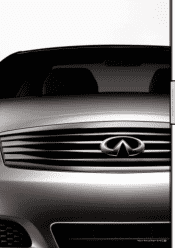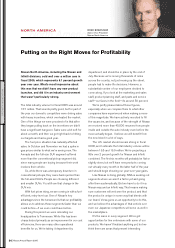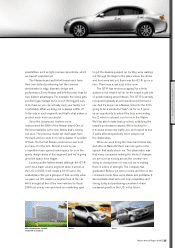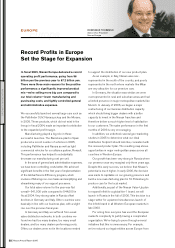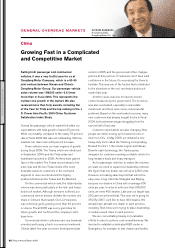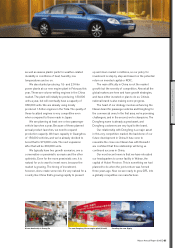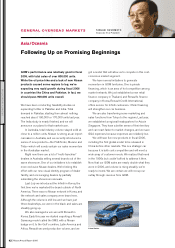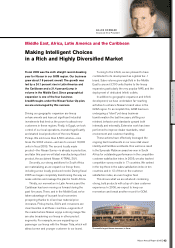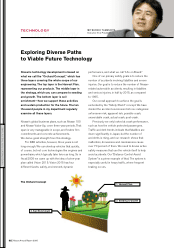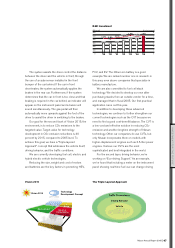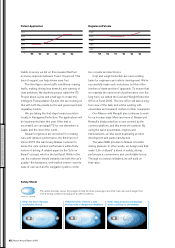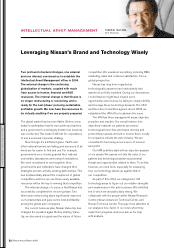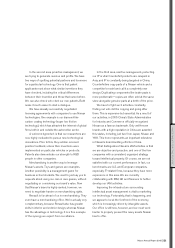Nissan 2006 Annual Report Download - page 43
Download and view the complete annual report
Please find page 43 of the 2006 Nissan annual report below. You can navigate through the pages in the report by either clicking on the pages listed below, or by using the keyword search tool below to find specific information within the annual report.
as well as assess plastic parts for weather-related
durability in conditions of heat, humidity, low
temperatures and so on.
We also started producing 1.6- and 2.0-liter
power plants at our new engine plant in February this
year. These are volume-selling engines in the China
market. The plant will initially be producing 180,000
units a year, but will eventually have a capacity of
360,000 units. We are already using locally
produced 1.6-liter engines in the Tiida. The quality of
these localized engines is very competitive even
when compared to those made in Japan.
We are planning at least one or two passenger
vehicle launches a year. Because of these planned
annual product launches, we need to expand
production capacity. We have capacity in Guangzhou
of 150,000 vehicles, and we’ve already decided to
boost that to 270,000 units. The next expansion
after that will be 360,000 units.
We typically have two growth scenarios, one a
conservative or pessimistic scenario and the other
optimistic. Even for the more pessimistic one, it is
natural for us to want to invest more, because the
market is growing. The timing of investment,
however, does create some risk. It’s very natural for a
country like China that’s growing rapidly to present
up and down market conditions, so our policy for
investment is step by step and based on the potential
return on invested capital or ROIC.
The main difficulty in China is not the market
growth but the severity of competition. Almost all the
global makers are here and have growth strategies,
and have either invested or plan to do so. China’s
national brand is also making some progress.
The heart of our strategy involves enhancing the
Nissan brand for passenger vehicles and Dongfeng for
the commercial ones. In the first area, we’re promising
challengers, and in the second, we’re champions. The
Dongfeng name is already a great asset, and
Dongfeng customers are very loyal to the brand.
Our relationship with Dongfeng is a major asset
in this very competitive market, the backbone of our
future development in China. It has come to
resemble the close one Nissan has with Renault. I
am confident that this relationship will bring us
continued success in China.
Our most recent news is that we have relocated
our headquarters to a new facility in Wuhan, the
capital of Hubei Province. This is something we had
planned to do when the joint venture was formed
three years ago. Now we are ready to grow DFL into
a globally competitive car manufacturer.
Nissan Annual Report 2005 41
Nissan dealership in Guang Da The new Dongfeng Nissan engine plant (Huadu) Unveiling the new Sylphy
GROWTH MOMENTUM




